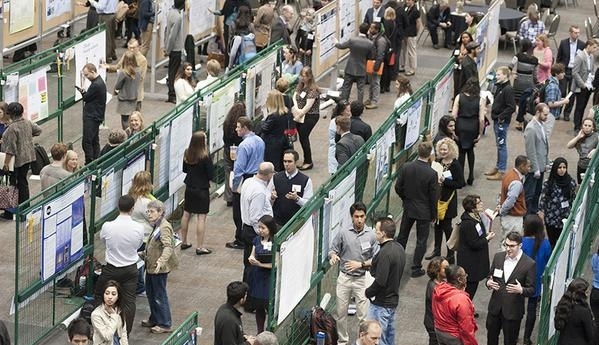Amanda Robinson, Museum and Exhibition Studies graduate student, won first place in the Office of the Vice Chancellor for Research 2015 Student Research Forum. Amanda's project, "Participatory Science: Utilizing Museum Collections and Citizen Science as Teaching Tools," utilized interactive digital media and visual display to create an educational template for teaching science to the public. See full abstract below.
About the Student Research Forum
The Student Research Forum provides a venue for students at UIC to present their scholarly efforts and is an opportunity to celebrate the wealth of research across all disciplines carried out by the dedicated students at UIC. It is one of the few student activities that is academic in nature and includes the entire student body; undergraduate, graduate and professional. Each year, students from all disciplines (Arts, Business, Computer Science, Engineering, Humanities, Life Sciences, Mathematics, Physical Sciences, Social Sciences, among others) are invited to present their work one-on-one to Forum attendees and judges during a high-energy 3-hour session, followed by an awards ceremony.
Abstract: "Participatory Science: Utilizing Museum Collections and Citizen Science as Teaching Tools"
As environmental and scientific concerns are mounting, and involve the general public, it is increasingly important to ensure that scientific literacy is kept at a high standard. For many individuals, schools are not always the most suitable venues to ensure these standards are upheld. Even the most basic biological principles can breed misconceptions if only diagrams and illustrations are provided. Rather, for these individuals a more hands-on approach is more suitable. In these instances, institutions such as museums can fill in these gaps. Additionally, citizen science projects have the ability to make hands-on learning useful for the participant as well as the scientific community.
My research has revolved more around the practical applications of science education rather than statistical or analytical findings. To put these ideas into practice, my capstone thesis project involved a collaboration between the Smithsonian National Museum of Natural History and Joshua Tree National Park. In the past, the park has hosted bioblitzes and long-term arthropod collecting done by volunteers. The focus of these events is ensuring that the park offers long-term learning experiences for visitors that lead to an appreciation and investment in the environment. Specimens collected at the park were sent to the Smithsonian to be studied. Some specimens were imaged and put online for the public to see.
I took on the development of an exhibit to be installed at the park that promoted the use of iNaturalist and understanding of the park’s biodiversity. iNaturalist is a webpage and app that visitors can upload biological observations to so that they may be identified. In addition to the educational experience for the submitter, observations and any specimens collected at the park by volunteers can be utilized for scientific research. This makes the process a mutually beneficial one for the general public and the scientific community.
To further introduce biological principles, we designed a poster that illustrates the interconnected life cycle of the Joshua Tree, the Yucca moth, and associated parasitoids. Using the Smithsonian’s insect collections and resources, I researched and imaged appropriate specimens for the design of the poster, as well as assembled display drawers using the museum’s entomological specimens.
The aim of this project was to create a sort of template that can be utilized by more institutions with the same goals: teaching science to the public.

